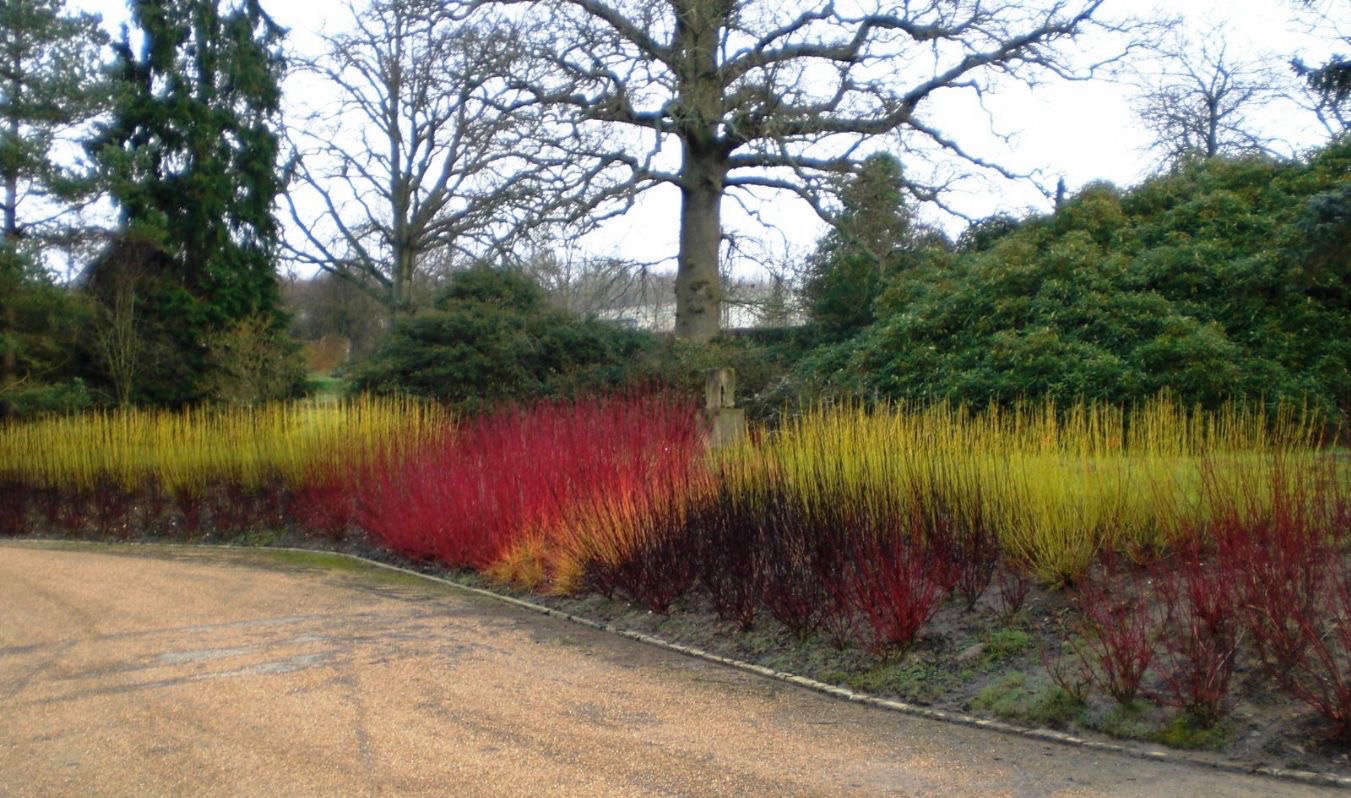Dogwood, Cornus: “Never the Underdog”
To Americans, a dogwood tree is so much a part of the native landscape that it is barely noticed. It can be scruffy in the woods or elegant on a lawn. For Europeans, dogwood is slightly exotic as a tree but common as a shrub. The point about cornus (as it is more often known in the UK), is the bark. Whether tree or shrub, it is a superior dog.
Photography by Britt Willoughby Dyer, except where noted.

Asian dogwood Cornus kousa; is seen more often in botanical gardens in the UK than in the backyard. For the adventuresome, it does grow quite happily in the UK, repaying the adventuresome with tasteless red fruits resembling upside-down strawberries. C. kousa ‘China Girl’ is a respected variety.
Creeping dogwood, Cornus canadensis, has more drama than other woodland ground covers, with bunches of red berries in autumn. It requires acid soil.

Cheat Sheet
• Flowering dogwood (Cornus florida) can be “just the usual” white or tinged pink, or it can be truly spectacular, such as Cornus controversa or C. alternifolia: garden giants with tiers of branches like a wedding cake.
• Flowering dogwood can also creep (in which case it called creeping dogwood or C. canadensis), and is a dramatic ground cover.
• Coppiced dogwood is the way to appreciate cornus in the UK, where coral colored new growth shimmers throughout winter, before being cut back again in late spring.

Keep It Alive
• Flowering dogwood is generally happy in neutral to acid soil conditions, though Cornus kousa will thrive in a setting that is slightly more alkaline.
• Moisture is preferred in dogwood trees and shrubs, though most prefer good drainage. The UK native Cornus alba will tolerate being waterlogged.
• Damp and sunny is ideal for the most popular decorative variety, Cornus alba; it needs light to develop the color and to provide the right setting where it can shine.

Good orange-coral varieties of Cornus sanguinea include ‘Midwinter Fire’, ‘Winter Flame’, or ‘Winter Beauty’. The most popular Cornus alba, particularly suited to marshy situations, is ‘Siberica’. For twigs of acid green in winter, there is Cornus stolonifera ‘Flaviramea’.
Red, orange ,or yellow twigged cornus glows well against a dark background in the slanting rays of winter sun. See how it’s grown by the experts, in Cambridgeshire: Garden Visit: The Glow of Anglesey Abbey.

Flowering dogwood also includes Cornus mas, delicate in appearance yet very hardy, flowering when little else is.

Cornus mas is a different beast altogether, with flowers strung along bare branches. It needs a yew backdrop, or something similarly dark, for its clusters to be appreciated. Cornus mas ‘Golden Glory’ has the approval of the Royal Horticultural Society, with an Award of Garden Merit.
For more of our favorite flowering trees, see:
- Trees 101: A Design Guide.
- Flowering Pear: A Design Guide to Fruit Trees.
- Garden Design 101: Crape Myrtle Trees.
Finally, get more ideas on how to successfully plant, grow, and care for dogwood tree with our Dogwood Tree: A Field Guide.
Interested in other types of trees? Get more ideas on how to plant, grow, and care for various trees (specimen, deciduous, evergreen) with our Trees: A Field Guide.
Finally, get more ideas on how to plant, grow, and care for various shrubs and hedges with our Shrubs: A Field Guide.








Have a Question or Comment About This Post?
Join the conversation